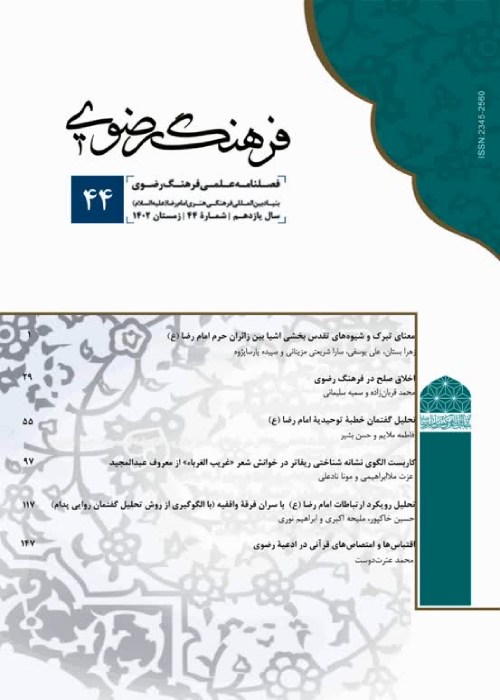The Themes Of The Qājār Paintings Of Tiles In The Raḍavī Shrine (A Comparative Study Of The Tile Painting Of Miracles Of The Lion’s Attack On Ḥamid ibn Mehrān With Lithographic Impressions)
Tiling is one of the idealistic ways of painting in the architectural decoration of Iran, at least its historical background dates back to before Islam. In the early Islamic centuries, art of tiling in Iran, because of the increase in the construction of religious buildings, appears as decorations in religious collections. The process of growth and development of the holy shrine has continued throughout the history of Islam and throughout the life of Islamic governments; hence, the type of architecture and its accessories, including tiling, throughout history and periods of Ilkhānī, Timurid, Safavid, Qājār and contemporary period have been done by different styles and methods. During the Qājār period, many developments in art and architecture, especially in the decoration of buildings, occurred. In this period, the painting of the building’s wall found new effects. In this era, the tile designers have inspired from portraiture, photography, postage stamps, western fashions, ancient art traditions of painting, as well as literary, historical, religious, and lithographic. The main purpose of this article is to get familiar with Qājār period tiles in the holy shrine and to adapt the miracle of the lion’s attack to Hamid Ibn Mehrān on the front of the eastern porch of the Atiq courtyard with similar lithographic prints. The question is what are the topics of the Qājār period tiles in the holy shrine of Raḍavī? Can we see the tile of Imam Riḍā's miraculous tale in the Ma'mūn's assembly (Lion’s attack on Hamid ibn Mehrān) from similar lithographic prints? If this tile is affected by lithographic prints, what are these effects? What works of the painter artists are more consistent with these items? The compilation of the materials and pictures of the present research was done by field and library method, and its writing was done with a descriptive and analytical approach along with interpretation of the images and their adaptation.
- حق عضویت دریافتی صرف حمایت از نشریات عضو و نگهداری، تکمیل و توسعه مگیران میشود.
- پرداخت حق اشتراک و دانلود مقالات اجازه بازنشر آن در سایر رسانههای چاپی و دیجیتال را به کاربر نمیدهد.


